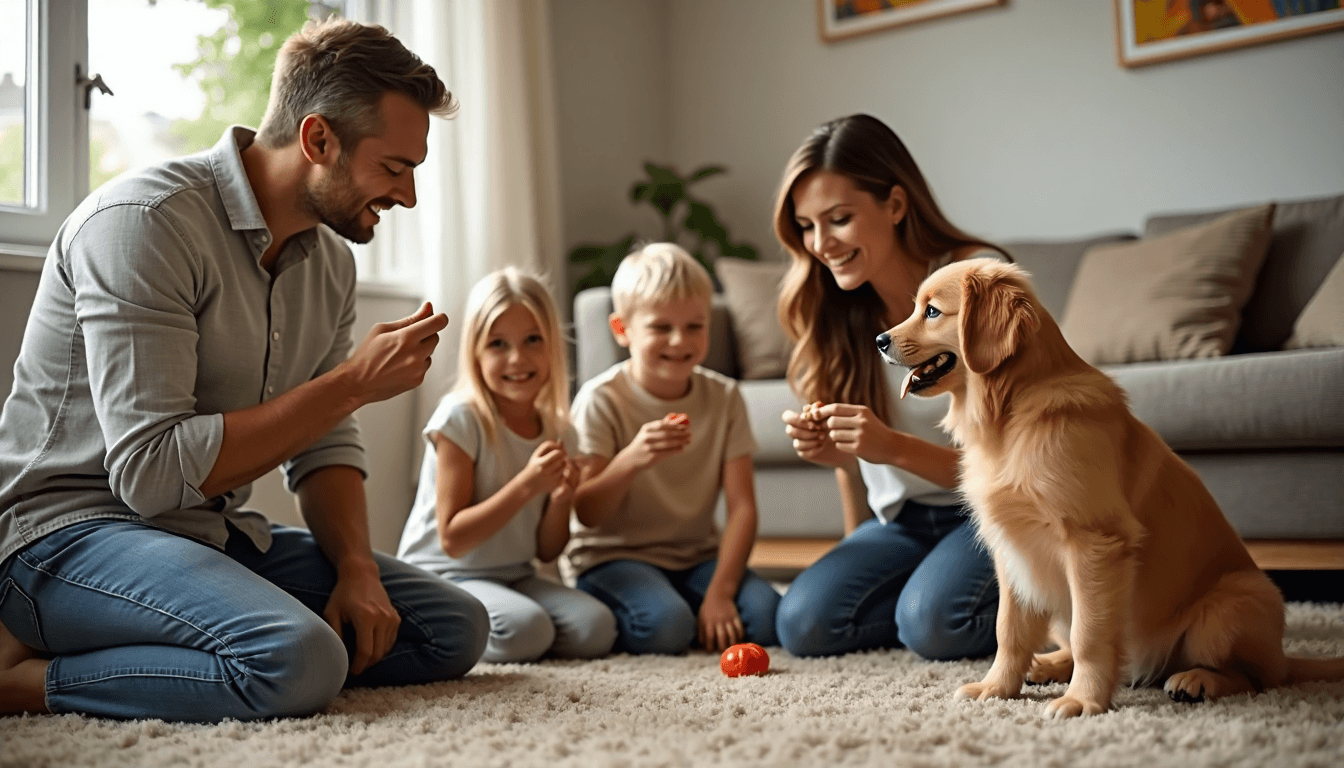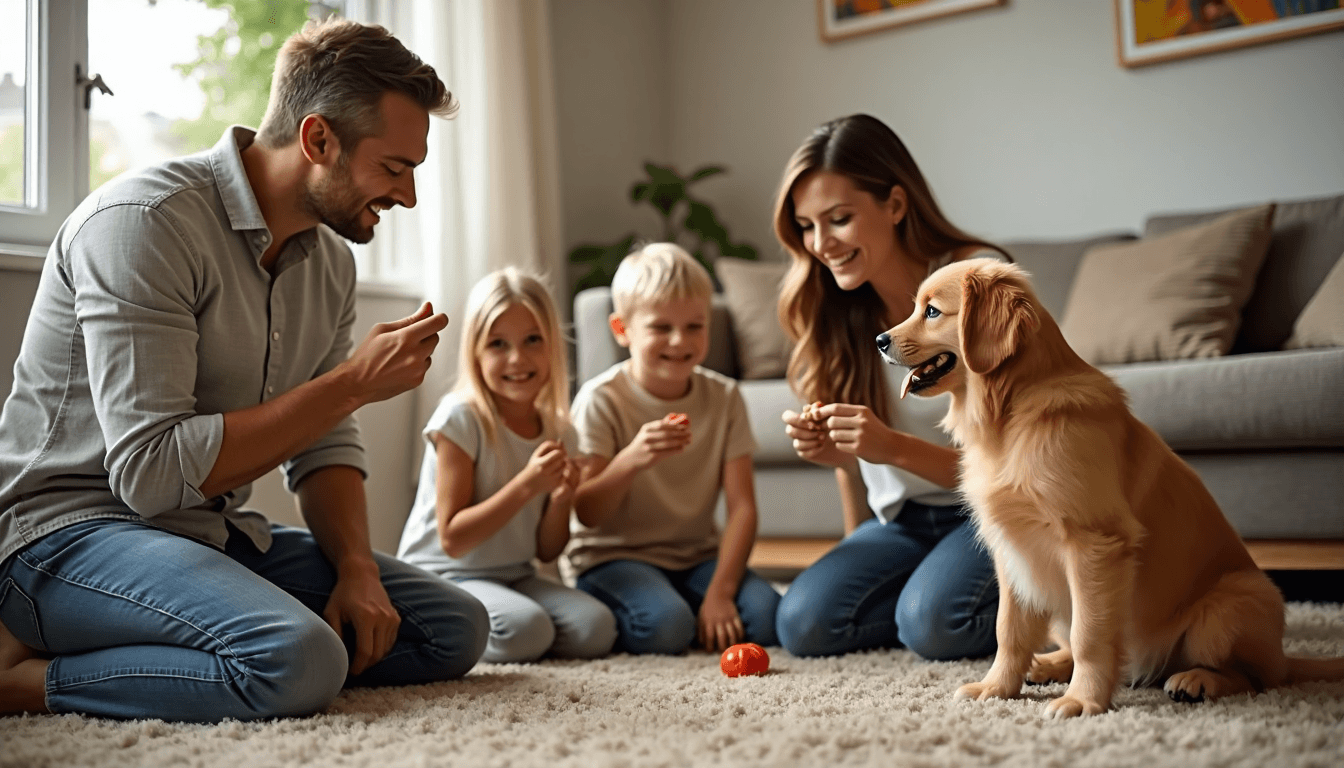
Puppy safety training is more than teaching a few cute tricks. Studies show that puppies socialized between 3 to 14 weeks are far less likely to develop fear-based behavior problems. Surprising, right? Most owners think obedience can wait, but missing this critical window can mean a lifetime of challenges. The real secret is that early, focused safety training builds confidence and trust that lasts well into adulthood.
Table of Contents
- Why Safety Training For Puppies Matters
- Key Safety Skills To Teach Every Puppy
- Tailoring Training For Diverse Puppy Owners
- Common Mistakes And How To Avoid Them
Quick Summary
| Takeaway | Explanation |
|---|---|
| Safety training is crucial for long-term well-being | Safety training lays the foundation for a puppy’s behavioral health and social skills, helping them navigate their environment safely. |
| Focus on essential commands | Teaching fundamental commands like “come,” “stay,” and “leave it” can prevent dangerous situations and enhance your puppy’s safety. |
| Tailor training to individual needs | Adapt training methods to fit the owner’s lifestyle and puppy’s temperament, ensuring a more effective and enjoyable training experience. |
| Avoid common training mistakes | Be consistent in commands, avoid neglecting socialization, and set realistic expectations to foster a positive learning environment for your puppy. |
Why Safety Training for Puppies Matters
Safety training for puppies is far more than a simple recommendation. It represents a critical foundation for your dog’s lifelong behavioral health, social adaptation, and personal safety. Puppies are not born knowing how to navigate the complex human world they inhabit. They require deliberate, structured guidance to understand boundaries, respond to commands, and develop appropriate social skills.
The Critical Window of Puppy Development
The first few months of a puppy’s life represent a neurologically sensitive period for learning and adaptation. Research from the American Veterinary Society of Animal Behavior emphasizes that early socialization classes offer tremendous benefits that significantly outweigh potential risks. During this crucial developmental stage, puppies are most receptive to new experiences, making it the optimal time to introduce safety training concepts.
According to scientific studies from Purdue University’s Canine Welfare Center, puppies experiencing structured socialization between 3 to 14 weeks are substantially less likely to develop fear-based behavioral problems. This window is when their brains are most plastic and adaptable, allowing them to form positive associations and learn critical safety skills that will protect them throughout their lives.
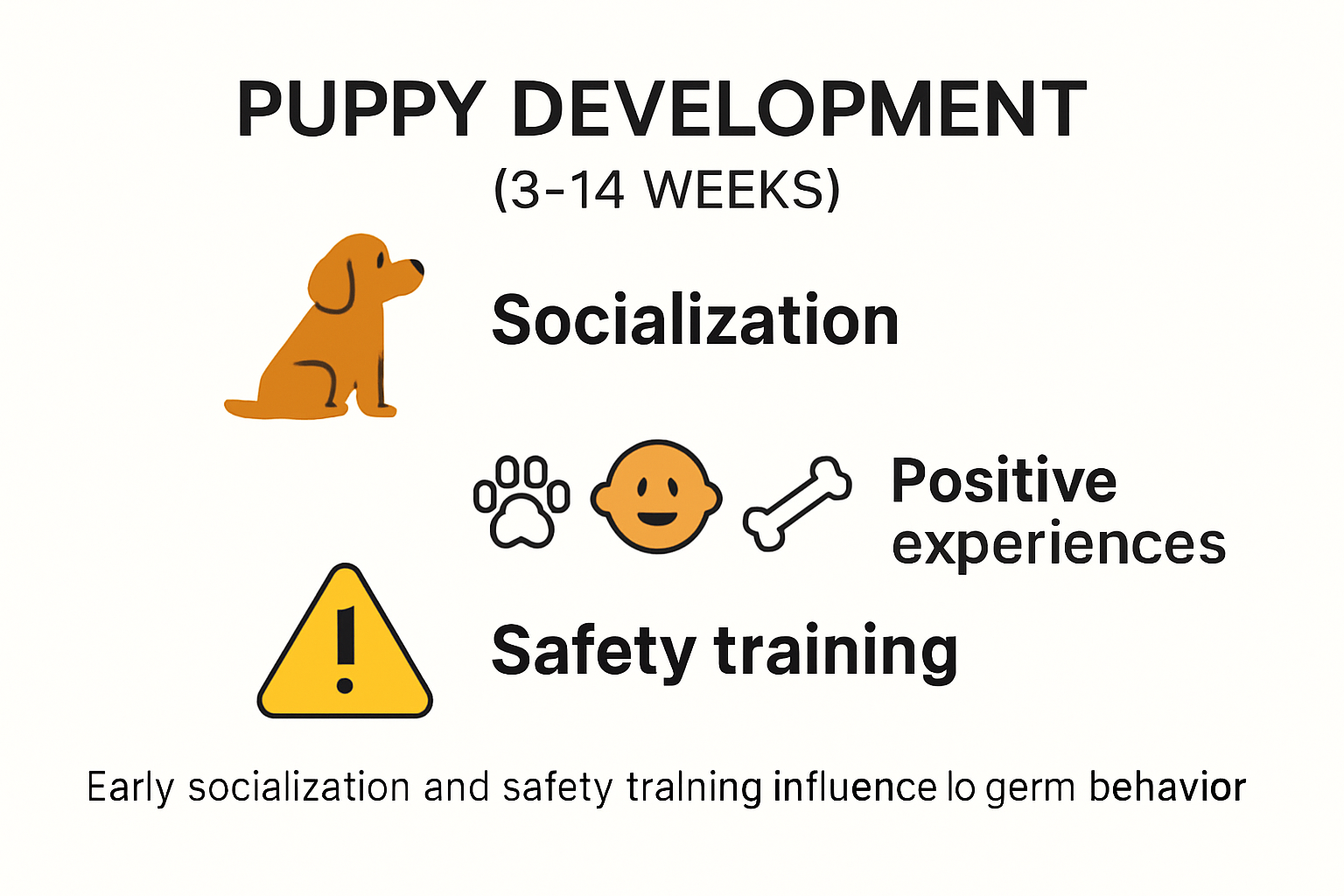
Preventing Behavioral Challenges Through Strategic Training
Safety training is not just about teaching commands. It’s about preventing potential behavioral issues that could compromise your puppy’s well-being and your relationship. Scientific research published in veterinary journals demonstrates that puppies receiving comprehensive training before three months of age exhibit significantly higher obedience levels and more positive interactions with strangers.
The implications of neglecting safety training are profound. Untrained puppies are more likely to:
- Develop anxiety and fear-based aggression
- Struggle with basic environmental adaptations
- Experience challenges in social interactions
- Become potential risks to themselves and others
By investing time in early safety training, you’re essentially creating a foundation of trust, communication, and mutual understanding with your puppy. This approach goes beyond simple obedience. It establishes a framework where your puppy learns to look to you for guidance, understands boundaries, and develops the confidence to navigate complex environments safely.
For those seeking comprehensive guidance on puppy development, our detailed puppy care guide offers additional insights into creating a supportive learning environment for your new companion.
Ultimately, safety training is an investment in your puppy’s future. It transforms potential uncertainty into confident, predictable behavior. By dedicating focused time and attention during these critical early months, you’re not just training a dog. You’re shaping a well-adjusted, secure, and socially competent companion who will be a joy to live with for years to come.
Key Safety Skills to Teach Every Puppy
Ensuring your puppy’s safety requires a systematic approach to training that goes beyond basic obedience. Specific safety skills can literally save your puppy’s life, preventing accidents, dangerous encounters, and potential life-threatening situations.
Essential Command Training for Puppy Safety
According to the American Kennel Club, teaching fundamental safety commands is crucial for a puppy’s well-being. The three most critical commands that form the foundation of safety training are: come, stay, and leave it.
The “come” command is potentially the most important safety skill. Research from Ohio State University’s Indoor Pet Initiative recommends starting training in a quiet environment. Begin by calling your puppy’s name followed by “come” in an enthusiastic tone. When they approach, offer immediate positive reinforcement with treats and praise. Gradually introduce distractions to ensure the command works in various settings, which could prevent your puppy from running into dangerous situations like traffic or potentially harmful encounters.
The “stay” command provides critical control in potentially risky scenarios. Start by having your puppy sit, then clearly say “stay” while using a hand signal. Incrementally increase the duration and distance, rewarding your puppy for maintaining position. This skill can prevent your puppy from darting into dangerous areas or approaching unsafe situations.
Below is a table summarizing the three core safety commands every puppy should learn, their purpose, and basic training tips:
| Command | Purpose | Basic Training Tip |
|---|---|---|
| Come | Recall puppy to safety; prevent accidents | Start in a quiet area; use positive reinforcement |
| Stay | Keep puppy stationary in risky scenarios | Use clear hand signal; increase distance gradually |
| Leave it | Stop puppy from ingesting/interacting with hazards | Place item on ground; reward ignoring it |
Preventing Hazardous Interactions
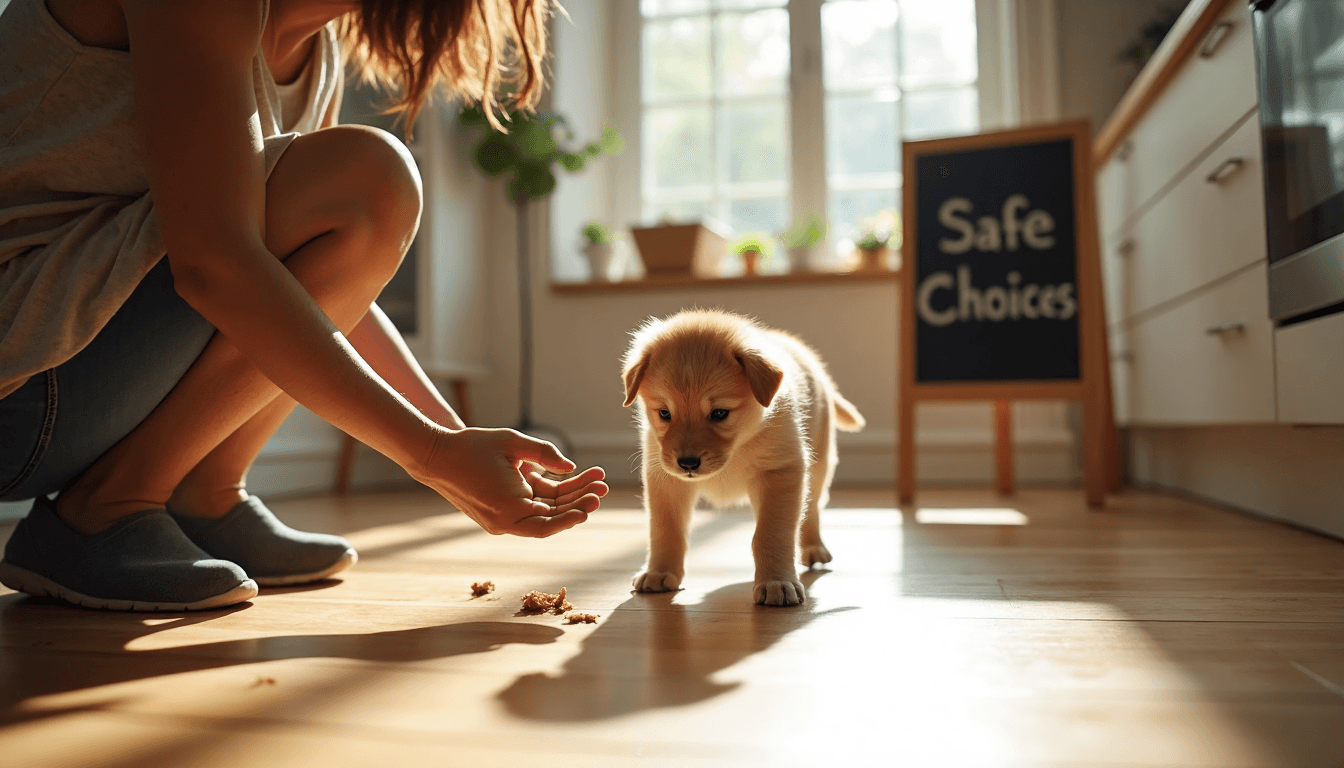
The “leave it” command is another crucial safety skill that can prevent serious health risks. Veterinary experts from Guardian Vet emphasize that this command can protect puppies from ingesting harmful substances. Begin training by placing a low-value item on the ground. When your puppy approaches, say “leave it” firmly but calmly. Reward them immediately when they move away or ignore the item.
This skill becomes vital in preventing potential poisoning or injury. Puppies are naturally curious and might attempt to eat or interact with dangerous objects like:
- Toxic foods
- Household chemicals
- Small objects that could cause choking
- Potentially poisonous plants
Building Consistent Safety Habits
Consistent training requires patience and repetition. Our comprehensive puppy training guide offers step-by-step strategies to reinforce these critical safety skills. Remember that each puppy learns differently, so adapt your approach based on their individual temperament and learning style.
Practice these commands in various environments with increasing levels of distraction. Short, frequent training sessions work best. Always use positive reinforcement techniques, rewarding your puppy with treats, praise, and affection when they successfully perform a safety command.
Ultimately, safety training is about creating a communication framework between you and your puppy. By investing time in teaching these essential skills, you’re not just preventing potential accidents. You’re building a foundation of trust, understanding, and mutual respect that will define your relationship for years to come.
Tailoring Training for Diverse Puppy Owners
Puppy safety training is not a one-size-fits-all approach. Different owners have unique circumstances, challenges, and needs that require specialized training strategies. Understanding how to adapt training techniques can make the process more effective and enjoyable for both the puppy and the owner.
Training Approaches for Different Lifestyles
Research from veterinary behavioral studies highlights that early socialization practices significantly impact a dog’s long-term behavior. For seniors or individuals with limited mobility, training might require modified techniques that focus on shorter, less physically demanding sessions. Owners with disabilities might need to leverage assistive technologies or specialized training methods that accommodate their specific needs.
Families with children require a different approach to puppy training. Educational programs on responsible pet ownership emphasize teaching children how to interact safely with puppies. This includes understanding the puppy’s body language, learning appropriate touch techniques, and recognizing when the puppy needs space. Training becomes a collaborative family effort, with each member understanding their role in the puppy’s safety and development.
Here is a comparison table outlining training adaptations for different owner lifestyles as discussed in the article:
| Owner/Lifestyle | Training Adaptation | Key Focus Areas |
|---|---|---|
| Seniors/Limited Mobility | Shorter sessions, less physical activity | Basic safety, manageable activities |
| Families with Children | Teach child-puppy interaction; shared roles | Body language, gentle handling |
| Owners with Disabilities | Use assistive tech or professional support | Custom training, accessibility |
| Urban/Apartment Living | Focus on commands for compact spaces | Stay, quiet, controlled walking |
| Service/Assistance Needs | Specialized skills, advanced obedience | Alerts, navigation, calm behaviors |
Specialized Training for Unique Circumstances
People living in apartments or urban environments face distinct challenges in puppy training. Space limitations and increased environmental stimuli require more focused attention on commands like quiet, stay, and controlled walking. Our guide to smart dog training offers tailored strategies for urban puppy owners who need to manage their pet’s behavior in compact living spaces.
Service dog handlers and individuals with specific medical needs require an even more precise approach to training. Their puppies must learn not just basic safety commands, but also specialized tasks that support their handler’s daily functioning. This might include:
- Precise response to medical alert signals
- Navigating complex environments
- Maintaining calm in stressful situations
- Understanding complex command sequences
Adaptive Training Techniques
Veterinarians and professional trainers recommend a flexible approach that considers the individual puppy’s temperament, the owner’s capabilities, and specific lifestyle requirements. Experts suggest that successful training depends on understanding both the puppy’s and the owner’s unique characteristics.
For owners facing additional challenges such as time constraints or physical limitations, technology can be a valuable training aid. Interactive training apps, video tutorials, and remote training sessions can provide support and guidance when traditional in-person training might be difficult.
Key considerations for tailored training include:
- Individual owner’s physical abilities
- Living environment
- Family dynamics
- Work schedule
- Specific medical or assistance needs
Ultimately, successful puppy safety training is about creating a personalized approach that works for both the puppy and the owner. It requires patience, adaptability, and a willingness to explore different techniques until you find the method that best suits your unique situation. By recognizing that no two puppies or owners are exactly alike, you can develop a training strategy that ensures safety, builds trust, and creates a lasting bond between you and your new companion.
Common Mistakes and How to Avoid Them
Puppy safety training is a delicate process filled with potential pitfalls that can derail your efforts and compromise your puppy’s behavioral development. Understanding these common mistakes can help you navigate the training journey more effectively and create a strong, positive relationship with your new companion.
Inconsistent Training Approaches
According to the American Kennel Club, inconsistency is one of the most significant barriers to effective puppy training. This includes using different words for the same command, allowing certain behaviors sometimes but not others, and varying your training techniques.
Inconsistent training confuses puppies and prevents them from understanding clear expectations. For instance, if one family member allows the puppy on the couch while another forbids it, the puppy receives mixed signals. This confusion can lead to behavioral uncertainty and potential training regression.
To avoid this mistake, establish clear rules and communicate them with all family members. Create a unified training approach where everyone uses the same commands, rewards, and correction techniques. Our comprehensive dog training guide offers strategies for maintaining consistency across different household members.
Neglecting Socialization and Positive Reinforcement
Research from the Atlanta Humane Society highlights the critical importance of early socialization. Many owners inadvertently limit their puppy’s exposure to diverse environments, people, and other animals during the crucial socialization window of 3-14 weeks.
Neglecting socialization can result in long-term behavioral challenges such as:
- Increased fear and anxiety
- Difficulty adapting to new situations
- Potential aggression towards strangers or other animals
- Reduced confidence in different environments
Equally problematic is relying on punishment-based training methods. Veterinary behavioral experts emphasize that yelling, physical corrections, or harsh punishments create fear and anxiety, ultimately hindering the learning process.
Unrealistic Expectations and Impatience
Many puppy owners set unrealistic expectations about training speed and complexity. Puppies, like human children, learn at different rates and require patience, consistent positive reinforcement, and age-appropriate training techniques.
Common unrealistic expectations include:
- Expecting perfect obedience immediately
- Assuming puppies understand complex commands instantly
- Becoming frustrated when progress seems slow
- Comparing your puppy’s learning pace to other dogs
Successful training requires understanding your puppy’s individual personality, learning style, and developmental stage. Short, frequent training sessions with plenty of positive reinforcement are more effective than long, intense training periods.
Remember that every mistake is an opportunity for learning. By recognizing these common training pitfalls and proactively addressing them, you can create a supportive, effective training environment that sets your puppy up for long-term success. Patience, consistency, and a positive approach are the cornerstones of building a trusting relationship with your new companion.
Frequently Asked Questions
What is the critical window for puppy safety training?
During the first few months of a puppy’s life, particularly between 3 to 14 weeks, they are most receptive to learning and socialization. This period is crucial for introducing safety training concepts that can shape their behavior and adaptability for life.
Why is early safety training important for puppies?
Early safety training establishes a strong foundation for your puppy’s behavioral health. It helps prevent fear-based behavioral issues and teaches essential commands that ensure their safety and well-being in various environments.
What essential commands should every puppy learn for safety?
Every puppy should learn fundamental commands such as “come,” “stay,” and “leave it.” These commands can significantly prevent dangerous situations and help your puppy navigate their environment more safely.
How can I tailor training approaches to fit my lifestyle and puppy’s needs?
Training approaches can be adapted based on the owner’s lifestyle, physical abilities, and the puppy’s temperament. Consider factors like family dynamics, living environment, and potential challenges when creating a training strategy that is effective and enjoyable for both you and your puppy.
Take the Next Step in Puppy Safety and Communication
Building a strong foundation in puppy safety training is essential, but what if you could go beyond basic commands to support your dog’s safety and independence every day? Many new owners feel nervous about leaving their puppies alone or managing unpredictable moments. From the article, it’s clear that having reliable communication can reduce anxiety and prevent accidents, especially for service dog handlers, disabled owners, or families who want added peace of mind.
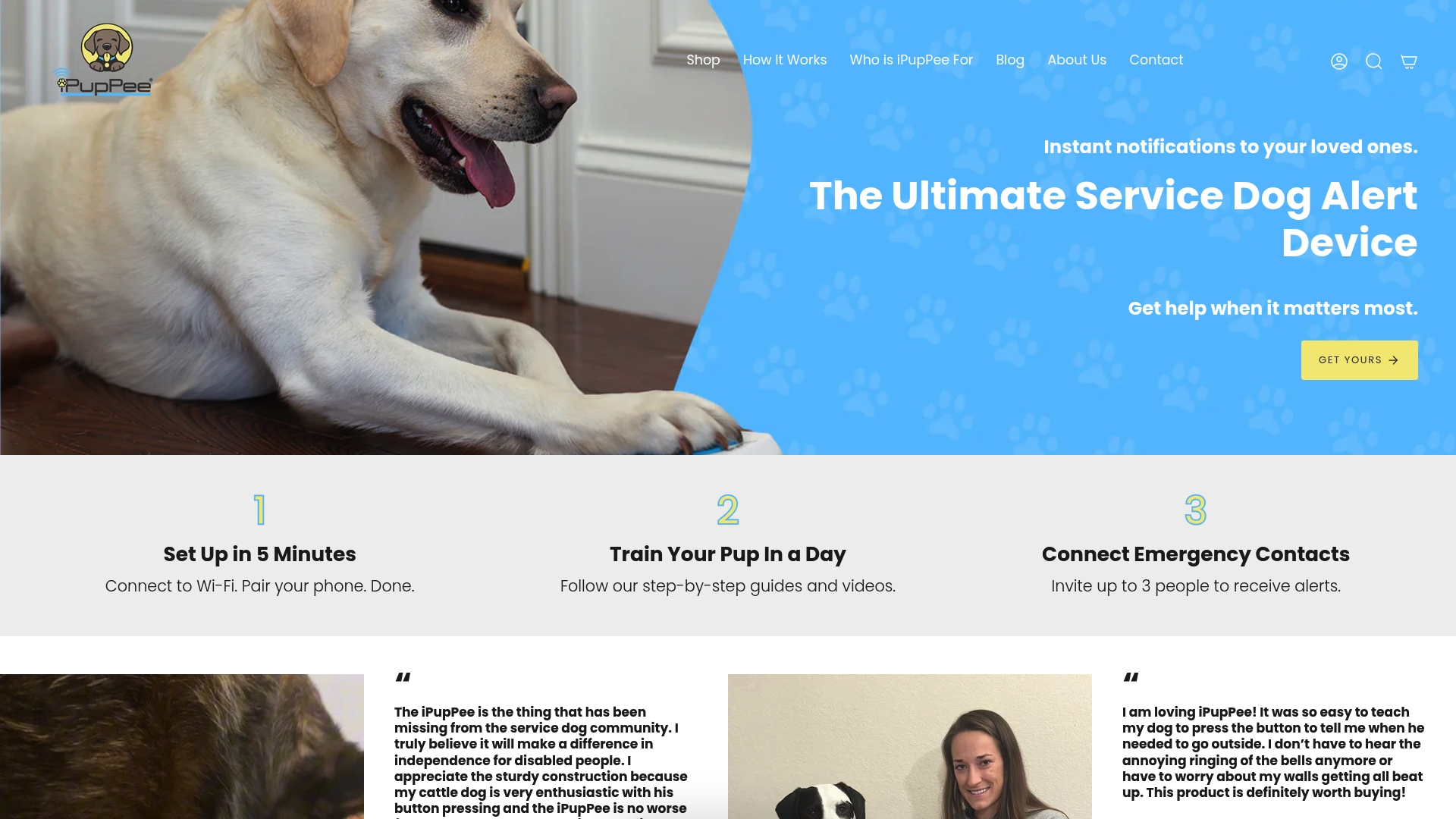
Discover how the innovative iPupPee device bridges the gap between your puppy’s safety training and real-world situations. The iPupPee allows your dog to signal their needs with a simple button press, giving you instant feedback and enhancing your training efforts. Whether your dog’s at risk of hazardous interactions or you want to build consistent safety habits, this solution empowers both pet and owner. Visit our home page now to explore featured product benefits, read customer stories, and get expert guidance tailored to every stage of your journey. Give your puppy a safer, more confident start today—your next step begins at iPupPee.

